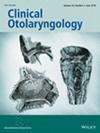Analysis of Vestibular Function Assessment Methods for Patients With Peripheral Vertigo Disease: A 5-Year Retrospective Study
Abstract
Objective
To investigate the relationship and differences between caloric test (CT) and video head impulse test (vHIT) in assessing vestibular function in patients with unilateral peripheral vertigo, and to comprehensively understand the functional status of horizontal and vertical (posterior and anterior) semicircular canals (SCCs).
Methods
The study retrospectively collected data from 240 patients with unilateral peripheral vertigo. Analyse the correlation and risk association between the severity of unilateral weakness (UW) and vestibulo-ocular reflex (VOR) outcomes of lateral, posterior and anterior SCCs in vHIT. Compare the correlation between the result parameters obtained from these two tests.
Results
A significant correlation (p < 0.05) was found between moderate and severe caloric UW groups and predictable abnormal VOR results in the ipsilateral lateral, posterior and anterior SCCs of vHIT, with incidence rates significantly higher than in the normal caloric group (lateral OR 6–8, posterior OR ≈ 5, anterior OR ≈ 11). A positive correlation existed between the sum of slow phase velocities of the affected side and gain in the lateral, posterior and anterior SCCs. UW negatively correlated with gain in the lateral and anterior SCCs but positively correlated with gain asymmetry between the left lateral-right lateral and right anterior-left posterior SCCs.
Conclusions
The abnormal rate of vHIT lateral, posterior and anterior SCCs increased with higher UW values. It seems that the concurrent involvement of high-frequency vestibular responses, as assessed by vHIT, is more probable in moderate or greater caloric unilateral weakness, with a higher abnormal risk in the anterior semicircular canal compared to others. Evaluating vertical semicircular canal function deserves attention.

 求助内容:
求助内容: 应助结果提醒方式:
应助结果提醒方式:


